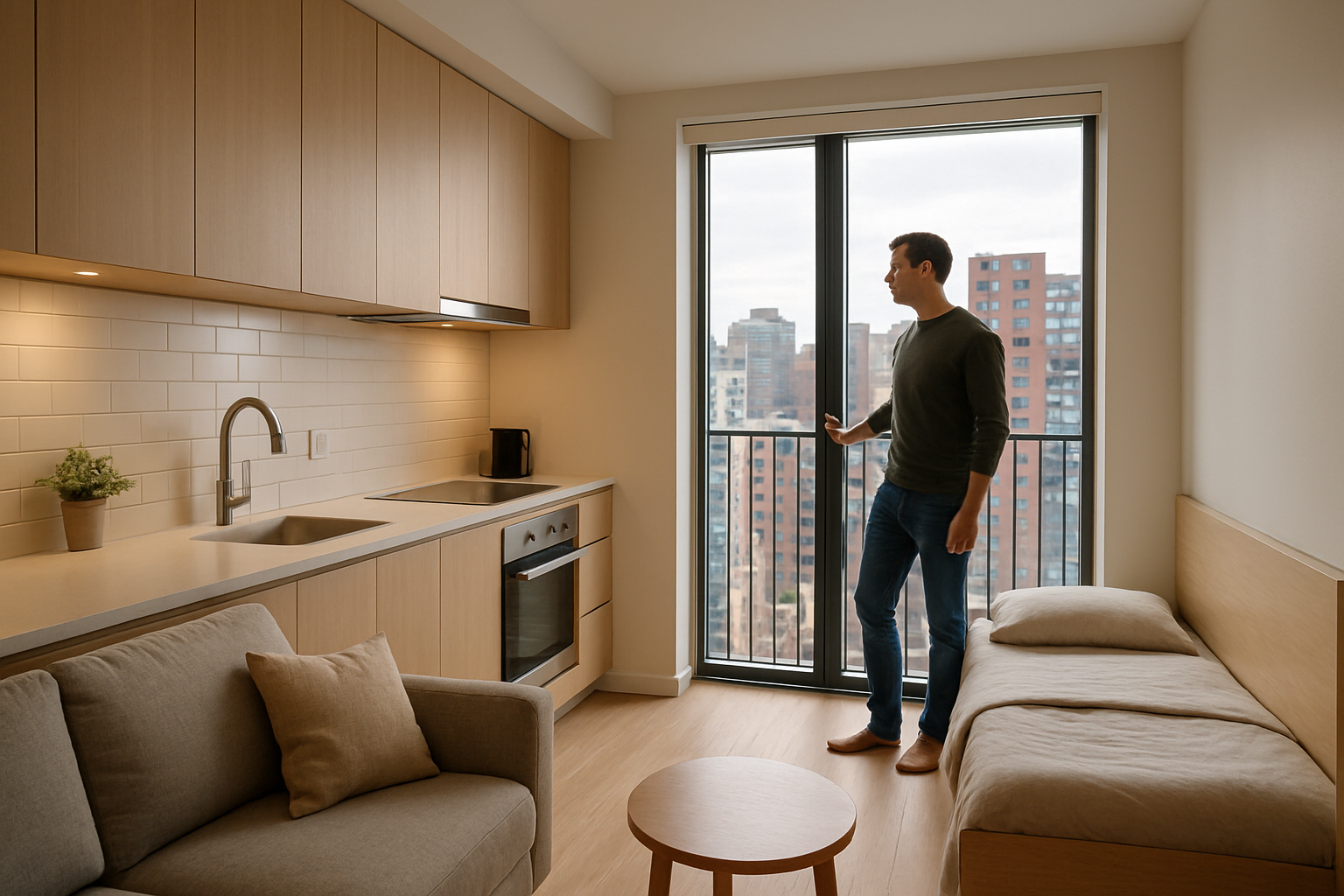Micro-Apartments: The Future of Urban Living?
In a world where city populations are booming and living spaces are shrinking, a new trend is emerging in the real estate market: micro-apartments. These compact living spaces, typically ranging from 200 to 400 square feet, are revolutionizing urban housing. As property prices soar and young professionals flock to city centers, micro-apartments offer an affordable solution without sacrificing location. But are these tiny dwellings a sustainable answer to urban housing challenges, or just a passing fad?

The concept isn’t entirely new. In Hong Kong, for instance, extremely small living spaces have been a reality for decades. However, what sets modern micro-apartments apart is their intentional design and focus on efficiency. Today’s micro-units are carefully crafted to maximize every square inch, incorporating clever storage solutions and multifunctional furniture to create a livable space in a minimal footprint.
Smart Design: Making the Most of Limited Space
The key to successful micro-apartment living lies in intelligent design. Architects and interior designers are pushing the boundaries of creativity to make these small spaces not just livable, but desirable. Features like Murphy beds, fold-down tables, and built-in storage are common in micro-apartments. Some units even incorporate movable walls or modular furniture systems that can transform the space from a bedroom to a living room to a home office with a few simple adjustments.
Developers are also focusing on high-quality finishes and amenities to compensate for the lack of space. Many micro-apartment buildings offer shared spaces like rooftop gardens, communal kitchens, and co-working areas. These common areas extend the living space beyond the apartment walls, fostering a sense of community among residents.
The Economics of Micro-Living
From an investment perspective, micro-apartments present an interesting opportunity. For developers, these units allow for a higher number of rentable units per building, potentially increasing overall revenue. In cities with high land costs, this can make development projects more financially viable.
For renters, micro-apartments often come with a lower price tag compared to traditional one-bedroom apartments in the same area. This affordability factor is particularly appealing to young professionals, students, and those looking to live in prime urban locations without breaking the bank. However, it’s worth noting that on a per-square-foot basis, micro-apartments can sometimes be more expensive than larger units.
Investors should also consider the potential for higher turnover rates in micro-apartments. While these units are attractive to certain demographics, they may not be suitable for long-term living or for those planning to start a family. This could lead to more frequent tenant changes, potentially increasing management costs.
Environmental Impact and Sustainability
Micro-apartments have the potential to contribute positively to urban sustainability efforts. By accommodating more people in less space, they can help reduce urban sprawl and the associated environmental impacts. Smaller living spaces generally require less energy for heating and cooling, potentially lowering the carbon footprint of residents.
Moreover, the central locations of many micro-apartment developments can reduce reliance on personal vehicles, encouraging walking, cycling, and use of public transportation. This aligns with the growing trend towards car-free or car-light lifestyles in urban areas.
However, critics argue that the environmental benefits may be offset by the energy-intensive nature of some micro-apartment amenities, such as communal spaces and high-tech features. The long-term sustainability of these developments will depend on thoughtful design and operation practices.
Regulatory Challenges and Zoning Issues
The rise of micro-apartments has not been without controversy. In many cities, these developments face regulatory hurdles and pushback from local communities. Zoning laws often set minimum size requirements for residential units, which micro-apartments may not meet. Some cities have had to revise their regulations to accommodate this new housing type.
There are also concerns about the potential impact on neighborhood character and infrastructure. Critics worry that an influx of micro-apartments could lead to overcrowding and strain local services. Advocates, on the other hand, argue that these developments can help revitalize neighborhoods and provide much-needed housing options.
As the debate continues, many cities are taking a cautious approach, allowing micro-apartment developments on a case-by-case basis or as part of pilot programs. This allows for evaluation of their impact before making widespread changes to zoning laws.
The Future of Micro-Apartments
As urban populations continue to grow and housing affordability remains a pressing issue, micro-apartments are likely to play an increasingly important role in the real estate landscape. However, their long-term success will depend on several factors:
-
Adaptability: Developers will need to ensure that micro-apartment buildings can be adapted for different uses in the future if market demands change.
-
Quality of Life: Striking the right balance between compact living and quality of life will be crucial. This includes not just the design of individual units, but also the provision of shared amenities and integration with the wider community.
-
Regulatory Environment: The evolution of zoning laws and building codes will significantly impact the feasibility of micro-apartment developments.
-
Market Acceptance: While popular among certain demographics, broader market acceptance will be necessary for micro-apartments to become a mainstream housing option.
-
Economic Factors: The continued affordability of micro-apartments relative to traditional housing options will be a key factor in their ongoing appeal.
In conclusion, micro-apartments represent an innovative response to urban housing challenges. While they may not be a one-size-fits-all solution, they offer a compelling option for certain demographics and could help alleviate housing shortages in high-demand urban areas. As the real estate market continues to evolve, micro-apartments are likely to remain a topic of interest for developers, investors, urban planners, and housing advocates alike.





